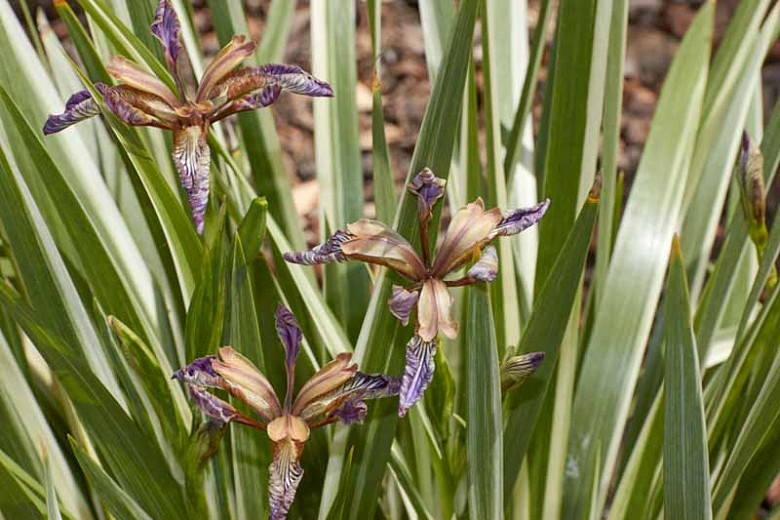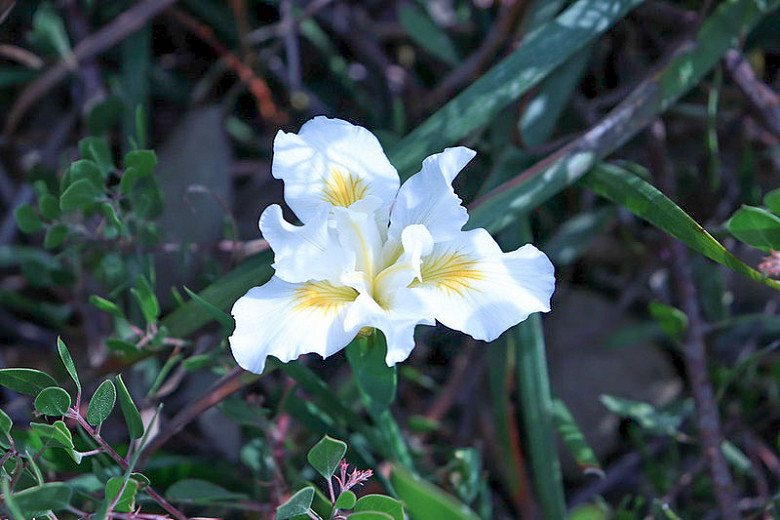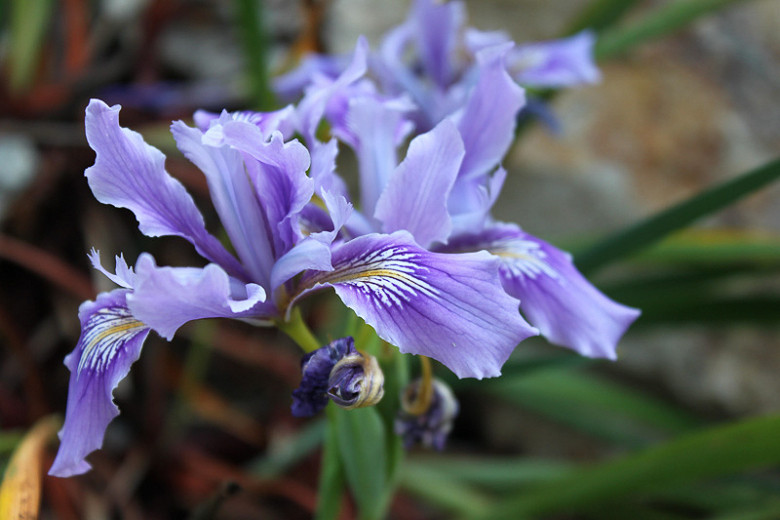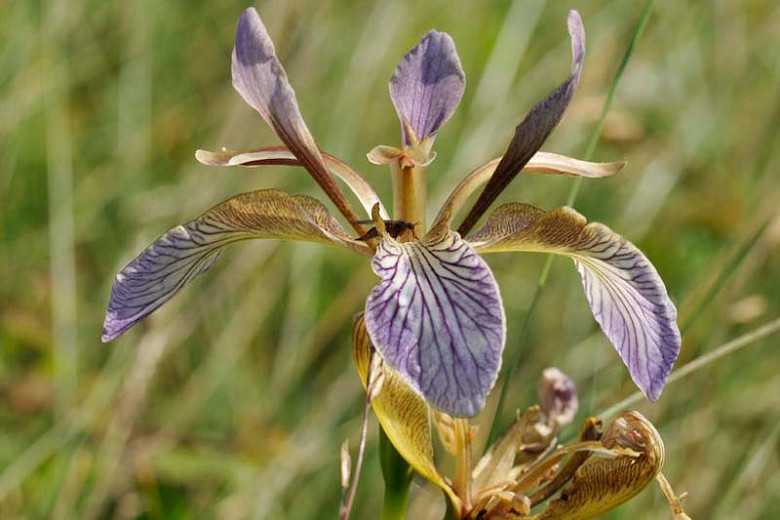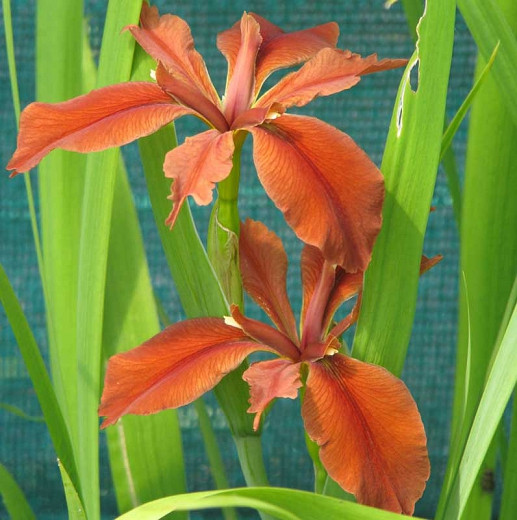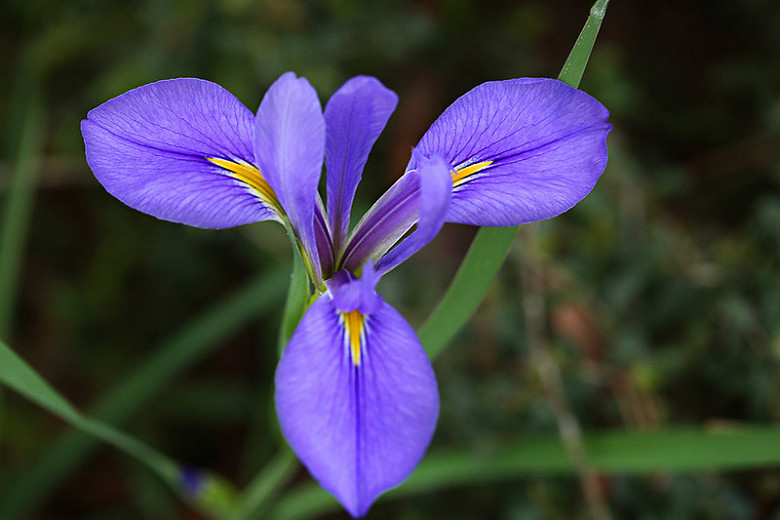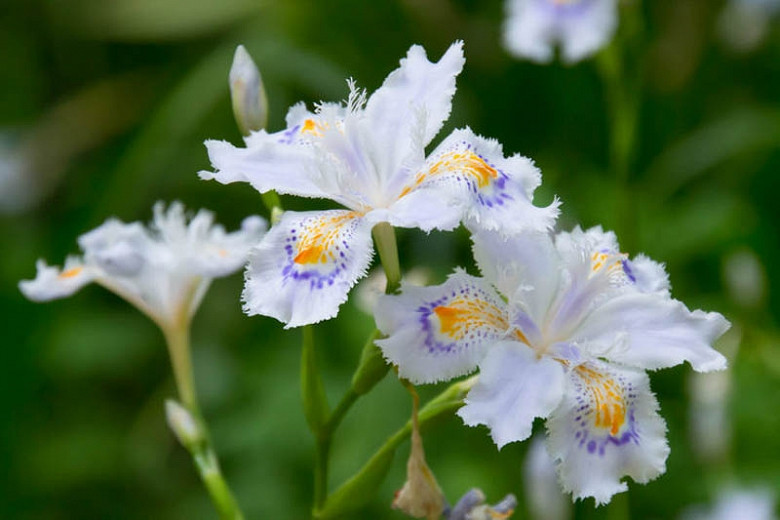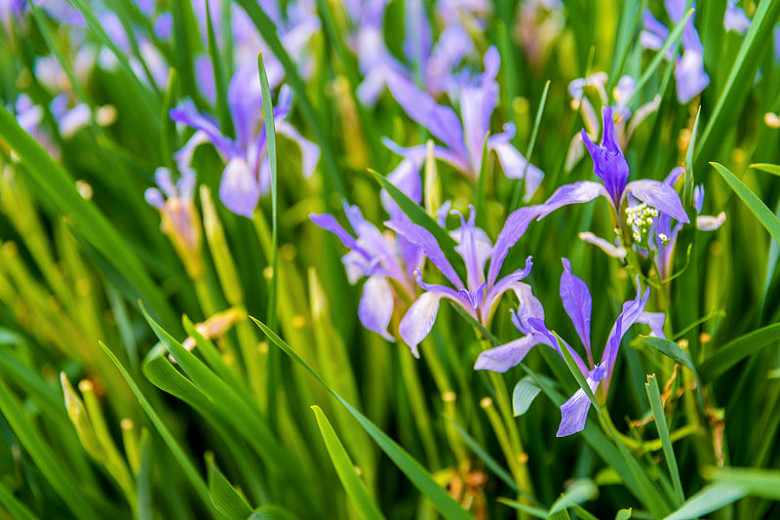Iris foetidissima Variegata (Variegated Stinking Iris)
Noted for its terrific foliage and showy fruit, Iris foetidissima 'Variegata' (Stinking Iris) is an evergreen perennial with small, pale lavender, yellow-tinged, beardless flowers in late spring. Rising atop upright stems, they are followed by attractive, disproportionately large seed pods which mature over the summer and burst open in early fall to reveal showy, brilliant orange-red seeds. Ignored by birds, they persist throughout the winter until the spring and put on a spectacular display. This rhizomatous perennial forms wonderfully attractive clumps of glossy, creamy-striped, sword-shaped, evergreen leaves, which are unpleasantly aromatic when cut or bruised, hence the common name of Stinking Iris. Robust and easy to grow, this remarkable iris does well in almost any situation. It will survive wet dry conditions and open or shaded sites.
- Recipient of the prestigious Award of Garden Merit of the Royal Horticultural Society.
- Grows up to 1-2 ft. tall (30-60 cm) and 12-18 in. wide (30-45 cm).
- Performs best in full sun or part shade, in moist, humus-rich, well-drained soils. Some tolerance to full shade. Established plants tolerate some dry conditions.
- A welcomed addition to beds and borders, underplanting shrubs and roses, and cottage gardens.
- Deer resistant.
- No serious insect or disease issues but watch for slugs, snails, thrips, and gray molds.
- Remove any dying foliage in autumn. Divide in spring or fall as needed.
- Propagate by seed sown in pots in a cold frame in autumn or spring. Propagate by division of rhizomes from midsummer to early autumn
- All parts may cause discomfort if ingested. Wear gloves and other protective equipment when handling.
- Toxic to dogs, toxic to cats, toxic to horses.
- Native to Europe, North Africa
Requirements
| Hardiness | 4 – 9 |
|---|---|
| Heat Zones | 2 – 9 |
| Climate Zones | 3, 3A, 3B, 4, 5, 6, 7, 8, 9, 10, 11, 12, 13, 14, 15, 16, 17, 18, 19, 20, 21, 22, 23, 24 |
| Plant Type | Perennials |
| Plant Family | Iris – Other |
| Exposure | Full Sun, Partial Sun, Shade |
| Season of Interest | Spring (Early,Late)FallWinter |
| Height | 1' – 2' (30cm – 60cm) |
| Spread | 1' – 2' (30cm – 60cm) |
| Spacing | 18″ – 24″ (45cm – 60cm) |
| Water Needs | Average |
| Maintenance | Average |
| Soil Type | Chalk, Clay, Loam, Sand |
| Soil pH | Acid, Alkaline, Neutral |
| Soil Drainage | Moist but Well-Drained, Well-Drained |
| Characteristics | Cut Flowers, Plant of Merit, Showy, Evergreen, Fruit & Berries |
| Tolerance | Deer |
| Garden Uses | Beds and Borders, Underplanting Roses and Shrubs |
| Garden Styles | Informal and Cottage |
